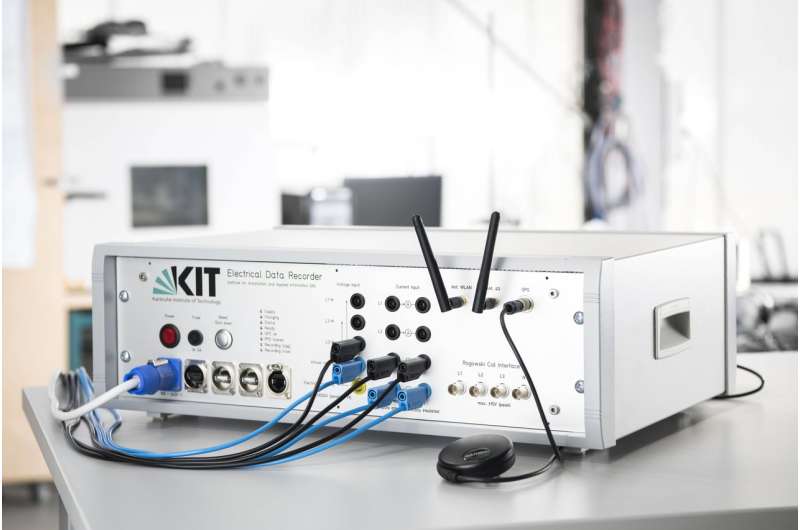Live, precise recording of grid voltage and load currents

Researchers of Karlsruhe Institute of Technology (KIT) have developed a novel monitoring and analysis tool for electrical power grids: The EDR – Electrical Data Recorder continuously scans grid voltage and load currents with high precision and high resolution. While power generation from renewable sources by decentralized producers is increasing, the EDR will provide deeper insight into real systems processes in the future. The data measured will enhance the quality of simulations and enable reliable control of future smart grids.
Electrical power supply is changing: The more the energy transition advances, the more power from volatile renewable sources, such as sun and wind, is fed into the grid, often by decentralized producers. As a consequence, the power grid has to balance locally varying production and load situations in order to maintain reliable supply. To this end, smart grids will interconnect producers, storage systems, and consumers via information and communication technologies and adjust them to each other in the future.
A special challenge consists in the increasing number of consumers that also act as producers feeding solar or wind-based power into the grid at decentralized locations. Their share in production is increasing, but they hardly stabilize the voltage or provide control energy. "Hence, we need operation management concepts that do not only optimally use the transport capacity of the power grid, but also ensure a high supply quality," says Dr. Heiko Maaß of the Institute for Automation and Applied Informatics (IAI) of KIT. "The basis are detailed simulations and high-resolution measurement data from ongoing grid operation."
Under his direction, researchers of IAI have developed the EDR – Electrical Data Recorder, a monitoring and analysis tool for electrical power grids. The device can be installed near the consumer or in industrial facilities and precisely records grid voltage and load currents. Thanks to a buffered power supply, recording even continues during power loss. The Electrical Data Recorder continuously scans three voltage channels (three phases) and four current channels (three phases plus neutral conductor) synchronously with a resolution of 16 bits and data acquisition rates of up to 25 KHz. By means of GPS synchronization, temporal allocation of measurement values from distributed measurement locations is ensured. If a high-performance data network connection is available, the complete high-resolution measurement data are stored continuously in a database for later processing. As an alternative, local intermediate storage of full resolution is possible for an offline recording period of up to eight weeks.
The EDR has a graphic user interface with touch support for interactive control of the recording process and display of the scanned data and derived characteristics. The measurement instruments can be used separately or in an interconnected scheme. In the latter case, all instruments are controlled and monitored via a central application. Interconnected operation, together with continuous recording, enables detailed propagation studies of disturbances and their history. "In future, the EDR is also planned to be used for data-driven modeling of grid segments and operating resources," project manager Heiko Maaß explains. "In this way, the quality of system models and control of smart grids will be improved considerably."
Provided by Karlsruhe Institute of Technology




















